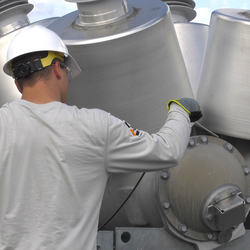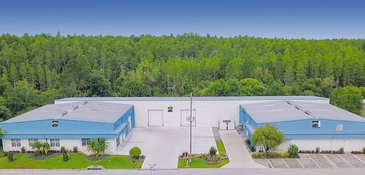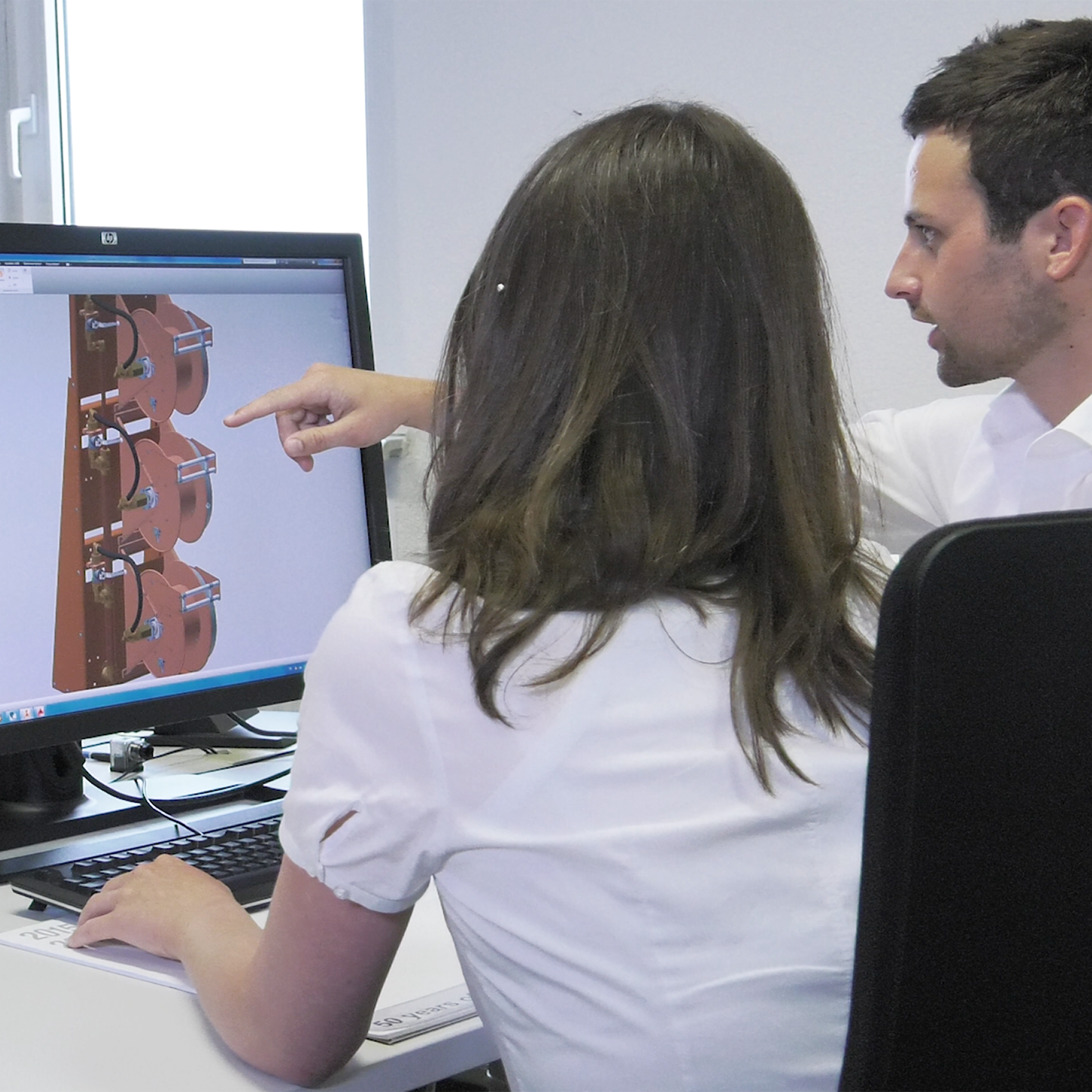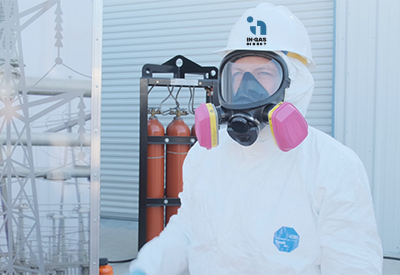Disclaimer note: This blog post outlines best practices and recommendations. This is not a certified training document. Training MUST BE obtained by a certified training specialist.
Sulfur hexafluoride (SF₆) is widely used in the electrical power industry for its superior insulating and arc-quenching properties. However, under normal repeated arcing, fault conditions—such as arcing, flash overs/fault operations, and moisture intrusion—SF₆ can break down into hazardous decomposition by-products that pose serious risks to technician health and safety and the service life of the GIE.
In these scenarios, proper personal protective equipment (PPE) is non-negotiable. This blog post walks you through the essential PPE needed for safe handling when SF₆ decomposition by-products are suspected.
Note: , only trained and certified personnel should perform decomposition by-product handling and clean-up.
Why Decomposition By-Products Are Dangerous
When SF₆ breaks down, it forms a range of toxic, acidic, and corrosive compounds including (but not be limited to):
- Sulfur dioxide (SO₂)
- Hydrogen fluoride (HF)
- Disulfur decafluoride (S₂F₁₀)
- Thionyl fluoride (SOF₂)
- Sulfur tetrafluoride oxide (SOF4)
These by-products can cause:
- Severe respiratory distress
- Skin and eye irritation and burns
- Corrosion to GIE, gas handling equipment and protective gear
- Long-term occupational health risks
That’s why proper detection and PPE are essential whenever decomposition is suspected.
Pre-Work Assessment: Know Before You Open
Before beginning any gas handling:
- Analyze the gas: Use a multi-gas analyzer to test for SO₂, HF, and other decomposition indicators.
- Assess the environment: Ensure ventilation or use local exhaust systems.
- Determine PPE level: Use gas concentration results to determine if standard PPE is sufficient or if SCBA is required.
Required PPE for Decomposition By-Product Risk
When SF₆ by-products are detected or suspected, technicians should wear the following:
1. Respiratory Protection
- Full-face respirator with P100 or acid gas/organic vapor combination cartridges
- PAPR or SCBA for high-concentration or confined-space work
2. Eye and Face Protection
- Full-face respirator or, if using half-mask respirator, a chemical splash face shield
- ANSI-rated safety goggles for additional protection
3. Body Protection
- Chemical-resistant disposable coveralls (e.g., Tychem, Tyvek with chemical barrier)
- Hooded & booted suits preferred for full coverage
- Dispose after use—do not reuse contaminated gear
4. Hand Protection
- Nitrile or butyl rubber gloves
- Double-gloving may be appropriate for prolonged work
5. Foot Protection
- Chemical-resistant boots or use of disposable boot covers
- Must be non-slip and impermeable
Downloadable PPE Checklist
Use this checklist to ensure technicians are properly equipped for handling SF₆ with suspected decomposition by-products:
Donning and Doffing Best Practices
Donning PPE: Suit Up the Right Way
Before handling SF₆-insulated equipment—especially when decomposition by-products are suspected—properly donning your PPE is critical for full-body protection and compliance with safety protocols.
Follow this step-by-step sequence:
- Inner Gloves:
Start with a pair of clean, chemical-resistant inner gloves (nitrile or butyl rubber). These act as your last line of defense during doffing. - Protective Suit:
Step into a disposable, chemical-resistant coverall (e.g., Tychem or equivalent). Ensure the suit includes a hood and is rated for chemical splash protection. Zip fully and seal any gaps with tape if necessary. - Respiratory Protection:
Don your full-face respirator with appropriate filters (P100 or combination organic vapor/acid gas cartridges). Check for a proper seal with a positive and negative pressure test. If conditions warrant, opt for a PAPR or SCBA instead. - Outer Gloves:
Add a second pair of gloves over the sleeves of your coverall. These should also be chemical-resistant and long enough to overlap the sleeves completely. Secure the cuffs with tape to prevent slippage. - Boots or Boot Covers:
Finish with chemical-resistant boots or disposable boot covers. Tuck the legs of the coverall into the boots to prevent tripping and exposure.
Donning Best Practices:
- Don PPE in a clean, designated area free from solid and airborne contaminants
- Inspect each item for integrity before use—no tears, holes, or expired filters
- Use a mirror or partner check to confirm everything is sealed properly
- Keep spare PPE on hand in case of contamination or damage mid-task
Once fully donned, proceed to the worksite carefully and avoid touching exposed skin or adjusting gear unnecessarily. Your protection only works if worn correctly from start to finish.
Doffing PPE: Don’t Bring Contamination Home
Removing PPE properly is just as important as wearing it. SF₆ decomposition by-products can cling to suits, gloves, and respirators, posing serious contamination risks if doffed incorrectly.
Follow these key doffing tips:
- Remove outer gloves first, then suit, then inner gloves
- Avoid touching outer surfaces—use clean inner gloves or dedicated doffing tools
- Roll garments inside-out to trap contaminants
- Always dispose of single-use PPE in hazardous waste bins
- Decontaminate reusable PPE per manufacturer guidelines
- Wash hands, face, and exposed skin thoroughly after removal
Designate a clean-to-dirty transition zone and ensure waste containment is set up before starting work. Your PPE did its job—make sure you finish the task safely.
Additional Safety Measures
- Use portable ventilation systems if indoors
- Have an eyewash and emergency shower nearby
- Use gas scrubbers when venting or transferring gas
- Work in teams with a safety observer on standby
- Ensure proper labeling and storage of contaminated equipment
Want to Learn More About By-Product Cleanup?
Check out the on-demand webinar from DILO Academy:
Emergent By-Product Cleanup Services
In this training, you’ll learn:
- What to do when decomposition by-products are detected
- Safe cleanup procedures and recommended PPE
- Case examples of field remediation
- How DILO and In-Gas Direct support utilities during emergency response events
Whether you’re a technician, EH&S coordinator, or field supervisor, this course provides essential insights into how to manage the risks of SF₆ by-products safely and compliantly.
Need Help On-Site?
DILO and In-Gas Direct offer trained technicians and mobile service units that can:
- Conduct full system audits
- Perform gas analysis
- Provide proper containment, cleanup, and PPE
- Assist with emissions reporting and documentation
- Disposal of contaminated SF6 gas
Contact In-Gas Direct to schedule a consultation or emergency response.






